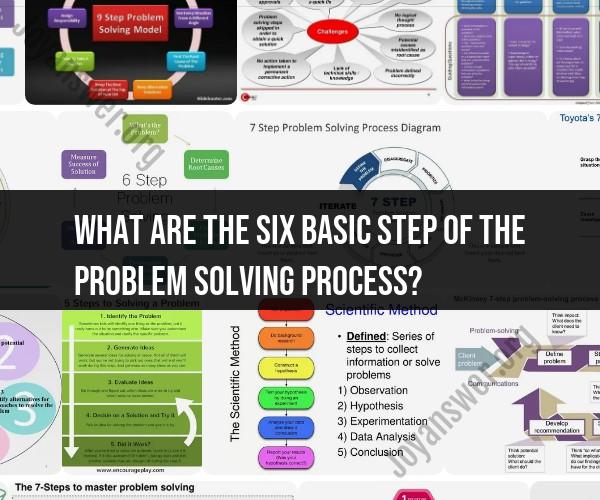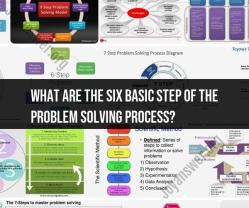What are the six basic step of the problem solving process?
The six basic steps of the problem-solving process provide a structured approach to addressing and resolving a wide range of challenges and issues. These steps are widely used in various fields and situations. Here are the six basic steps:
1. Problem Identification:
- The first step is to recognize and define the problem or challenge clearly. Ensure a thorough understanding of the situation, its impact, and the desired outcome. Ask questions to gather information about the problem.
2. Problem Analysis:
- Analyze the problem by breaking it down into its components. Try to understand the underlying causes and factors contributing to the problem. This may involve research, data collection, and examining patterns.
3. Goal Setting:
- Define specific, measurable, achievable, relevant, and time-bound (SMART) goals or objectives. Determine what you want to achieve by solving the problem. Your goals should be aligned with the problem's resolution.
4. Solution Generation:
- Brainstorm potential solutions and alternatives to the problem. Encourage creativity and diverse perspectives during this phase. Avoid judgment and criticism of ideas at this stage.
5. Evaluation of Options:
- Assess the pros and cons of each potential solution. Consider feasibility, potential risks, costs, and benefits associated with each option. Compare the solutions against your defined goals.
6. Decision-Making:
- Select the most suitable solution based on the evaluation. Make an informed decision that aligns with your goals and values. Be prepared to justify your choice.
These six steps provide a structured framework for tackling problems and making decisions. Effective problem-solving often involves adaptability, critical thinking, and collaboration. While these steps offer a guideline, keep in mind that the process may not always be linear, and it may be necessary to revisit earlier steps or iterate through the process to arrive at the best solution.


